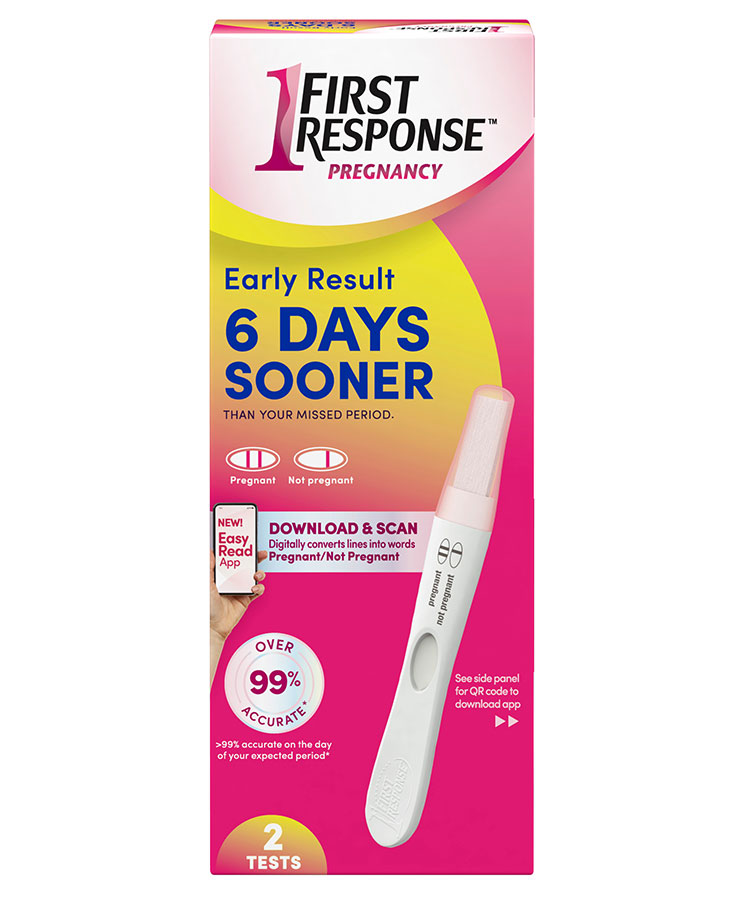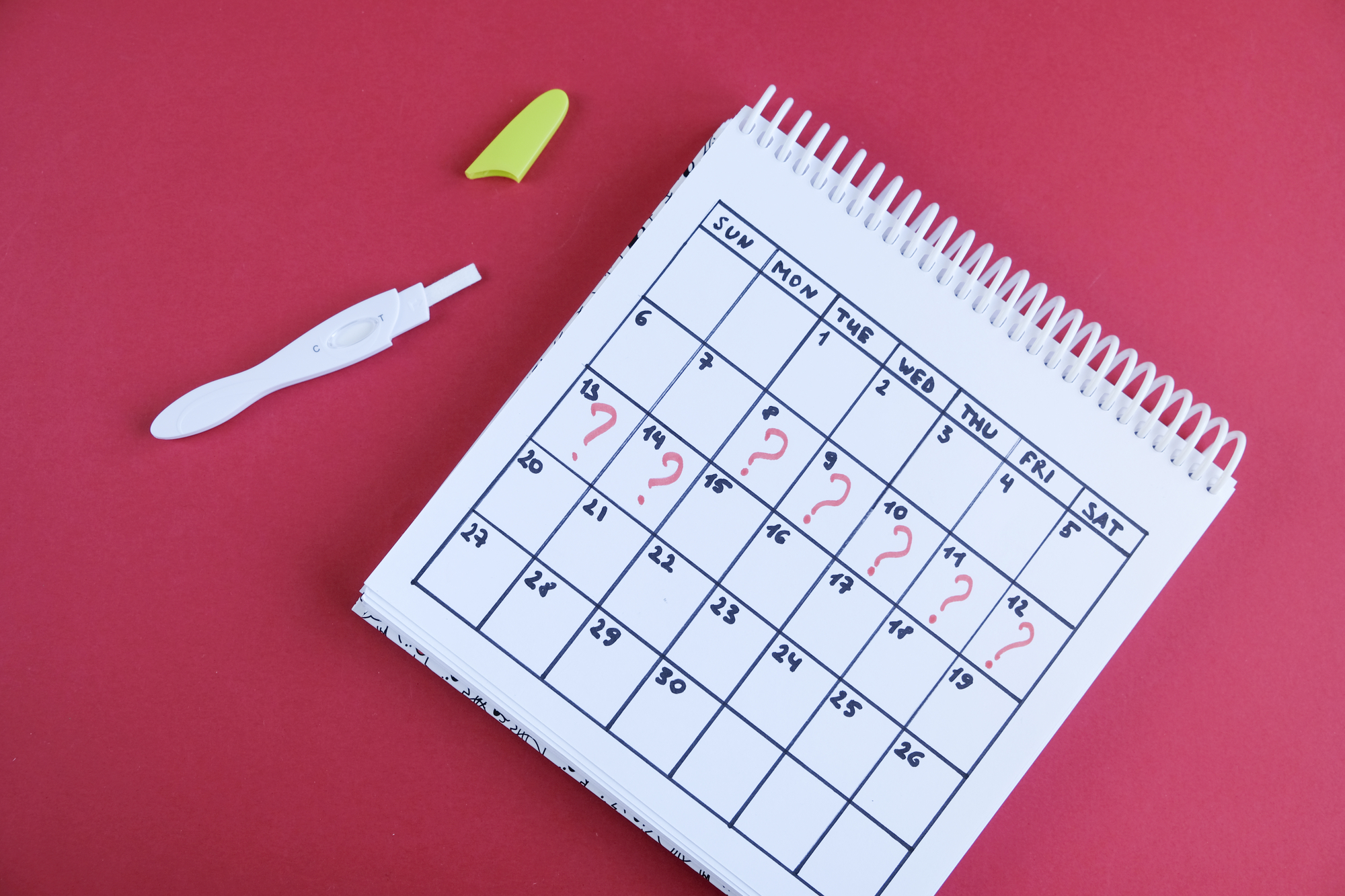
/am-i-having-implantation-bleeding-in-pregnancy-2759953_final-f62b2cf10d7946be9c643f16b08e0089.png) Drinking too much water before the test. Set a timer according to the package instructions to be sure you've waited for the right amount of time. Give the test time (usually a few minutes) to work. If you can't wait that long, ask your healthcare provider for a blood test. The blood test is positive earlier than the urine test. Many kits provide a second test for this purpose. For the most accurate results, repeat the test 1 week after a missed period. The earlier after a missed period that you take a home pregnancy test, the harder it is for the test to detect hCG. This is the most common cause for a false negative result. You might get a false negative if you do either of the following: It's possible to get a negative result from a home pregnancy test when you're actually pregnant. Rare causes: These include some fertility treatments, hormone secretion from a tumour or from your pituitary gland, and other causes. Ectopic pregnancy: The embryo has implanted outside your womb. Technique of doing the test: Incorrectly doing or interpreting the test can cause false positives. Pregnancy loss: A false positive might happen if you had a pregnancy loss soon after the fertilised egg attached to your uterine lining. Could a positive result be wrong?Īlthough uncommon, it's possible to get a positive result from a home pregnancy test when you're not actually pregnant. If you have a negative test but still think you might be pregnant, repeat the test 1 week after your missed period or talk to your healthcare provider. the accuracy of the pregnancy test brand.Ī positive test result is almost certainly correct. how soon after you become pregnant you take the test. when you ovulate and how soon the egg implants. how closely you follow the instructions. The accuracy is much higher if you wait longer and repeat the test after a week. When trying to detect pregnancy on the first day of a missed period, up to 46% of woman will have a falsely negative result, depending on the brand and technique of the user. The real life accuracy is lower, especially in early pregnancy. However, this number is taken from research in the lab, not real life outside the test tube. Home pregnancy test manufacturers generally claim the tests are about 99% accurate.
Drinking too much water before the test. Set a timer according to the package instructions to be sure you've waited for the right amount of time. Give the test time (usually a few minutes) to work. If you can't wait that long, ask your healthcare provider for a blood test. The blood test is positive earlier than the urine test. Many kits provide a second test for this purpose. For the most accurate results, repeat the test 1 week after a missed period. The earlier after a missed period that you take a home pregnancy test, the harder it is for the test to detect hCG. This is the most common cause for a false negative result. You might get a false negative if you do either of the following: It's possible to get a negative result from a home pregnancy test when you're actually pregnant. Rare causes: These include some fertility treatments, hormone secretion from a tumour or from your pituitary gland, and other causes. Ectopic pregnancy: The embryo has implanted outside your womb. Technique of doing the test: Incorrectly doing or interpreting the test can cause false positives. Pregnancy loss: A false positive might happen if you had a pregnancy loss soon after the fertilised egg attached to your uterine lining. Could a positive result be wrong?Īlthough uncommon, it's possible to get a positive result from a home pregnancy test when you're not actually pregnant. If you have a negative test but still think you might be pregnant, repeat the test 1 week after your missed period or talk to your healthcare provider. the accuracy of the pregnancy test brand.Ī positive test result is almost certainly correct. how soon after you become pregnant you take the test. when you ovulate and how soon the egg implants. how closely you follow the instructions. The accuracy is much higher if you wait longer and repeat the test after a week. When trying to detect pregnancy on the first day of a missed period, up to 46% of woman will have a falsely negative result, depending on the brand and technique of the user. The real life accuracy is lower, especially in early pregnancy. However, this number is taken from research in the lab, not real life outside the test tube. Home pregnancy test manufacturers generally claim the tests are about 99% accurate. 
All tests are slightly different, so always check the instructions. It's important to know what a positive or negative result looks like for the brand of test you are using. Results may show up after a few minutes as 2 lines for pregnant and 1 line for not pregnant, a colour or a symbol such as a '+' or '-' sign. The current brand found at your GP or Family Planning centre normally uses a suction tube to transfer a small amount of urine into the testing window. The result appears on the stick after a few minutes. Generally you pee directly on the stick, or first in a jar and then briefly dip the stick in. Most pregnancy tests come in a box with 1 or 2 long sticks. This hormone enters your bloodstream and urine. It starts to be produced after fertilisation and implantation of the embryo onto the lining of your womb during week 2 of pregnancy. How does a pregnancy test work?Īll pregnancy tests detect the hormone human chorionic gonadotrophin (hCG), a hormone that is present only when you are pregnant. Home pregnancy tests can be bought from a pharmacy or over the internet and you can also get them from Family Planning centres. Can medicines interfere with test results?Ī home pregnancy test is a simple test using a small sample of urine (pee or mimi) to find out if you are pregnant. These tests can give a quick result and you can do the test in private.

On this page you will find information on: Here are answers to some common questions about home pregnancy tests. A pregnancy test can let you know if you are pregnant.


/am-i-having-implantation-bleeding-in-pregnancy-2759953_final-f62b2cf10d7946be9c643f16b08e0089.png)




 0 kommentar(er)
0 kommentar(er)
